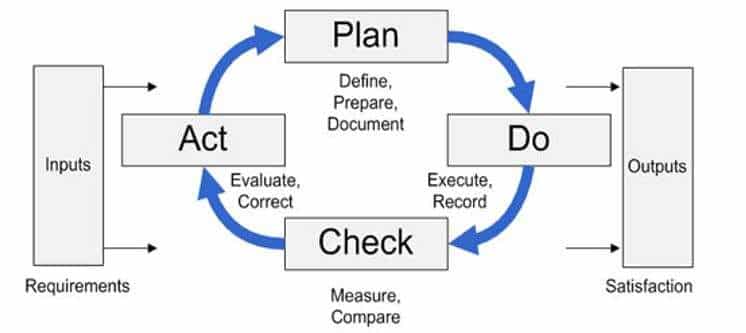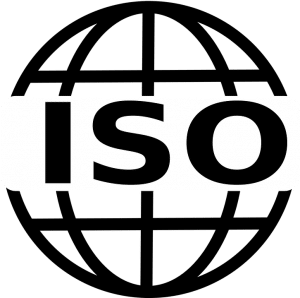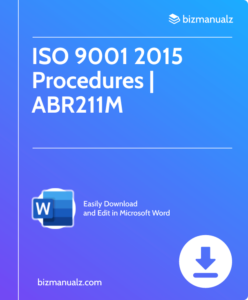Who Maintains ISO 9001 Standards?

The International Organization for Standardization (ISO) is devoted to maintaining ISO 9001 standards. It provides a framework for quality management systems used globally. ISO makes sure businesses can regularly provide products and services of top-notch quality. Who maintains ISO 9001 standards?
Role of International Organization for Standardization (ISO)
ISO’s enthusiasm for maintaining ISO 9001 standards originates from their goal to facilitate international trade and create confidence among customers. By following the criteria stated in the standard, organizations can show their commitment to delivering products and services that satisfy customer requirements consistently.
ISO teams up with national standardization bodies worldwide to boost the adoption of ISO 9001. It persuades governments, industry associations, and other stakeholders to approve the standard as and example of quality excellence. Through this international network, ISO encourages innovation, exchanges knowledge, and promotes best practices in quality management.
ISO develops and refreshes the ISO 9001 standard through a meticulous process. It involves input from experts in various areas, ensuring the standard stays applicable to many sectors. ISO also offers guidance and help to businesses aiming for certification. It assists them in implementing quality management systems.
Role of ISO Technical Committees
Technical Committees are vital for keeping ISO 9001 up-to-date. They’re made up of experts from a range of fields who work together to make sure the standard meets the needs of businesses worldwide.
Their main job is to look over existing standards and review new technologies, practices and methods. This makes sure ISO 9001 is still effective in helping companies achieve quality management and customer satisfaction. The committees take in feedback, research and discuss changes or improvements that could be made.
Technical Committees also supervise the implementation of ISO 9001 globally. They give guidance and assistance to businesses looking for certification, with training, workshops and resources.
A notable example of the role of Technical Committees is their part in developing ISO 9001:2015 – the latest version of the standard. They labored to incorporate the opinions of people everywhere and address trends like risk-based thinking and strategic alignment. Their hard work led to a comprehensive revision that takes into account current business practices, while remaining consistent with earlier versions.
Role of National Standardization Bodies
National Standardization Bodies are essential for maintaining ISO 9001 standards. Such bodies, for example the International Organization for Standardization (ISO), act as guardians of quality management systems worldwide. They make and adapt standards, make sure they’re followed, and give advice to companies wanting certification.
Professionals from many industries take part, donating their knowledge and experience to build the standards. They do thorough research and take input from people involved to make sure ISO 9001 standards stay relevant and helpful for businesses and customers. The specialists guarantee the standards are tough, trustworthy and can change with the market.
In addition to creating and revising standards, National Standardization Bodies also offer training and certification services. They give certifying programs for certification bodies, which approve organizations meeting ISO 9001 requirements. This makes sure certification is trustworthy and clear.
It’s important to remember that National Standardization Bodies are separate but keep to strict rules set by international standardization organizations like ISO. They do a lot of work to keep ISO 9001 standards upright by doing regular audits and assessments of certified organizations.
According to a 2020 ISO report, there are over 160 national standardization bodies helping to make and manage ISO 9001 standards all over the world. Accreditation bodies act like the voice of reason making sure companies don’t cross the line between quality and chaos.
Role of Accreditation Bodies
Accreditation bodies – the unsung heroes of ISO 9001 standards. They assess the competence and impartiality of certification bodies that grant ISO 9001 certificates. Guaranteeing accuracy and consistency of the certification process.
Evaluating the technical competence and management systems of certification bodies, to ensure reliable audits. Monitoring and reviewing the performance of certified organizations to preserve ISO 9001 certification. Surveillance audits and periodic assessments to verify compliance and identify areas for improvement.
Accreditation adding credibility to ISO 9001 certifications. Assurance that they are issued by competent and unbiased certification bodies. Helping businesses gain trust and confidence from customers, partners, and stakeholders.
Organizations need to collaborate with accredited certification bodies. Demonstrate commitment to quality management practices and stay ahead in the competitive market.
Start your journey towards ISO 9001 certification today! Embrace the role of accreditation bodies and take proactive steps to achieve excellence in quality management. Don’t miss out on boosting your organization’s reputation with ISO 9001 accreditation!
Role of Certification Bodies
Certification Bodies are essential for upholding ISO 9001 standards. They assess and organization’s quality management system to check if it meets ISO criteria. Audits are carried out and certifications are issued to businesses that meet requirements.
These Bodies act as independent third parties and verify that processes adhere to ISO 9001 standards. This includes customer focus, leadership involvement, process approach, continuous improvement, and evidence-based decision making.
Not only do Certification Bodies evaluate for initial certification, they also conduct surveillance audits to make sure compliance is maintained. This helps preserve the trustworthiness of ISO 9001 standards.
Pro Tip: When selecting a Certification Body, look for their accreditation status to guarantee their competence and impartiality.
Maintaining ISO 9001 standards requires everyone’s participation, like a chaotic family getting together for Thanksgiving.
Collaboration and coordination among these entities
ISO is responsible for developing and updating the ISO 9001 standard. Accreditation Bodies assess Certification Bodies to ensure they are competent. Certification Bodies evaluate organizations against ISO 9001 requirements and grant certification. Regulatory Authorities monitor compliance with ISO 9001 standards and enforce necessary actions.
These entities collaborate to create a quality management system across industries, improving customer satisfaction, continuous improvement, and regulatory adherence. The collaboration extends beyond these entities, involving stakeholders like industry associations, consultants, auditors, and practitioners. This helps refine standards based on changing industry needs.
Pro Tip: When it comes to ISO 9001 standards, effective collaboration between responsible entities boosts consistency and certification credibility, benefiting organizations seeking compliance. It’s like dating – find someone committed, reliable, and won’t ghost you.
Benefits of a well-maintained ISO 9001 standard
Chaos reigns supreme without ISO 9001 standards, but with it come numerous benefits! Improved customer satisfaction, enhanced process efficiency, better risk management, increased employee engagement, competitive advantage, and organizational growth are just a few of the advantages.
Here are some tips to make the most of those benefits:
- Foster a quality culture
- Document and record meticulously
- Actively seek feedback from customers and stakeholders
By embracing the principles set forth by ISO 9001, organizations can amplify their benefits and gain and edge in the ever-changing business environment. So, for order and success, let’s embrace the ISO 9001 standard!
ISO 9001 Standards
ISO 9001 standards must be continually maintained. The International Organization for Standardization (ISO) directs the development and improvement of these standards. Certification bodies audit to make sure ISO 9001 regulations are being met. Organizations establish and monitor quality management systems.
For a successful maintenance of ISO 9001 standards, collaboration is essential. The ISO supplies guidelines and structures for quality management. This ensures organizations have a trustworthy base to build on. Certification bodies ensure auditors are skilled and impartial.
They assess and organization’s adherence to ISO 9001 requirements. Organizations themselves have a great responsibility to implement and track their quality management systems.
All involved must work together to realize the full potential of ISO 9001 standards. Communication between the ISO, certification bodies, and organizations should be regular. They can share insights on best practice, trends, and areas for improvement.
Training programs can be developed to help auditors with the changing landscape of quality management. Professional development opportunities for those involved in maintaining ISO 9001 standards should also be available.
By collaborating, communication, and knowledge sharing, ISO 9001 standards can be held at higher levels. This effort will ensure quality management systems stay effective, changeable, and compliant with international requirements. This will benefit organizations, customers, and stakeholders.
Frequently Asked Questions

1. Who maintains ISO 9001 standards?
ISO 9001 standards are maintained by the International Organization for Standardization (ISO), which is and independent, non-governmental organization.
2. What is the role of the International Organization for Standardization (ISO) in maintaining ISO 9001 standards?
The role of ISO in maintaining ISO 9001 standards is to develop and publish the standards, provide guidance on their implementation, and ensure their consistency and relevance over time.
3. How often are ISO 9001 standards updated?
ISO 9001 standards are reviewed and revised on a regular basis to ensure they remain up-to-date and continue to meet the needs of businesses and organizations. The revision cycle is typically every 5-10 years.
4. Can anyone participate in the development of ISO 9001 standards?
Yes, anyone can participate in the development of ISO 9001 standards. ISO has a robust process for gathering input and feedback from a wide range of stakeholders, including industry experts, businesses, governments, and consumer organizations.
5. Are ISO 9001 standards legally binding?
No, ISO 9001 standards are voluntary and not legally binding. However, many organizations choose to adopt and implement these standards because they provide a globally recognized framework for quality management.
6. What are the benefits of implementing ISO 9001 standards?
Implementing ISO 9001 standards can bring numerous benefits to organizations, such as improved customer satisfaction, enhanced process efficiency, increased productivity, better risk management, and a competitive edge in the marketplace.

















Leave a Reply